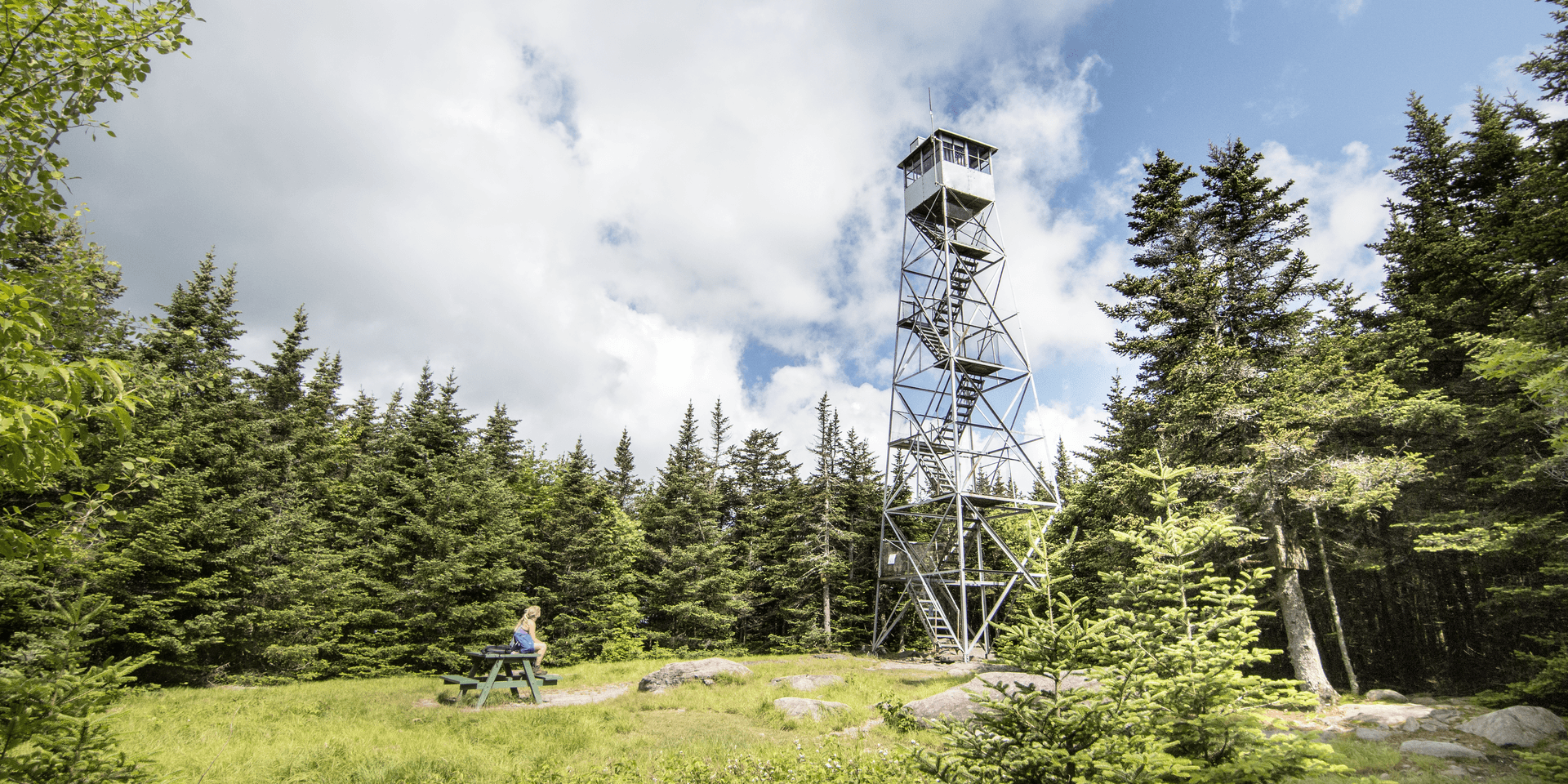You are here
Balsam Lake Mountain is the 17th-highest peak in the Catskills, reaching 3,731 feet in elevation. At its summit there is a 47-foot fire tower that offers 360-degree views of the surrounding Catskill Mountains. It is located within the Balsam Lake Mountain Wild Forest, which consists of more than 13,500 acres and includes miles of hiking trails, lean-tos for camping, water bodies for canoeing, and streams for fishing. This mountain is located in Delaware County, and the trail follows the original fire road to the top.
From Mill Brook Road the path is approximately 6 miles long round trip and gains 1,100 feet in elevation. The NY-NJ Trail Conference produced a map to help you navigate your route. (The Department of Environmental Conservation also has a map that displays a different perspective.)
From the DEC parking area, the blue-blazed Dry Brook Ridge Trail enters the woods on the opposite side of the road. It follows a gradual ascent on a wide, marked trail that is bordered by signs designating private property on either side. You will come upon a registration box at approximately a third of a mile.
The trail continues to climb through the forest and reaches a trail intersection at approximately 2.25 miles. Head to the right, where there is a gate across your path preventing motor vehicles from ascending. Continue up the mountain as the grade becomes much steeper. You will see a wooden sign designating that you’ve reached 3,500 feet in elevation, at which point campfires are no longer permitted. After this, there is only about 200 feet more of gain in elevation until you reach the cabin and an open field with the fire tower. Climb to the top to take in the incredible views! Balsam fir trees, responsible for the naming of this region, dominate the land below you. From here, fires were once spotted as far away as Sullivan County and the Shawangunks. Return down the same trail for the quickest descent.
Throughout the 1800s, the Catskill Mountains were exploited for tannin and timber. Tannin, from the bark of the eastern hemlock, is used for treating animal hides for leather production. Its harvesting left first-growth trees peeled and dead all over the land. Logging companies then came in to reap the remains for commercial-grade timber. Unfortunately, it was common practice for these companies to make their money and abandon the land and owed property taxes.
With barren mountains and dead trees, this area became very vulnerable to forest fires. The members of the Balsam Lake club, who used the lands for hunting and fishing, built the tower to detect these fires early. It was erected in 1887 and was the first mountaintop observation station in New York. To prevent further destruction, the New York State Assembly created the new forest preserve in 1885, which grouped the Catskills with the Adirondacks and transferred the lands to the state for protection. The forest preserve would then employ fire monitors at towers throughout the state.
Ironically, this first tower was destroyed by a fire that likely ignited by a lightning strike. The club built a 35-foot replacement in 1905 and maintained it until the Forest, Fish, and Game Commission (FFGC) took it over in 1909. A truck road was then constructed (this path from Mill Brook Road), and a dedicated phone line was installed. In 1919 the wooden tower was replaced with a 47-foot Aermotor steel tower. It is not clear whether or not this is the current structure. The cabin at the top was built in the 1960s to replace the original one constructed in 1918.
Over the next few decades, better public education about the causes of forest fires and improved local fire departments led to the decline of its necessity to be staffed. In addition, surveillance by aircraft became much more economical. The tower and cabin were officially closed in 1988.
Under threat of being dismantled, the Catskill Center for Conservation and Development and DEC worked with communities to form the Tower Restoration Project. In 2000, the Catskill Fire Tower Project and NYSDEC were able to restore and reopen the tower to the public. It was added to the National Register of Historic Places in 2001.
The Balsam Lake Mountain Fire Tower is one of the five remaining fire towers in the Catskill Mountains. The other four are Hunter, Overlook, Red Hill, and Tremper. They are managed by the Catskill Center, which opens up the cabins and tower cab in the summer months for visitors to enjoy. If you are interested in volunteering on the Catskill Fire Tower Project, please complete the volunteer form.
Along this route, there is an unmarked trail to the summit of Graham Mountain, which is on private property and requires permission to enter and traverse. It is often combined with a trek to the fire tower by those aspiring to become members of the Catskill Mountain 3500 Club.
Logistics + Planning
Current Weather: Powered by Dark Sky






























Comments
Sign In and share them.